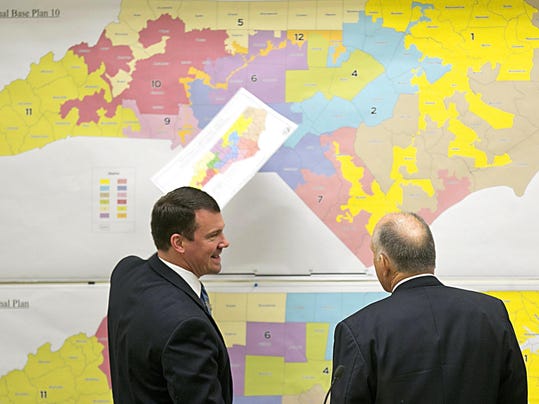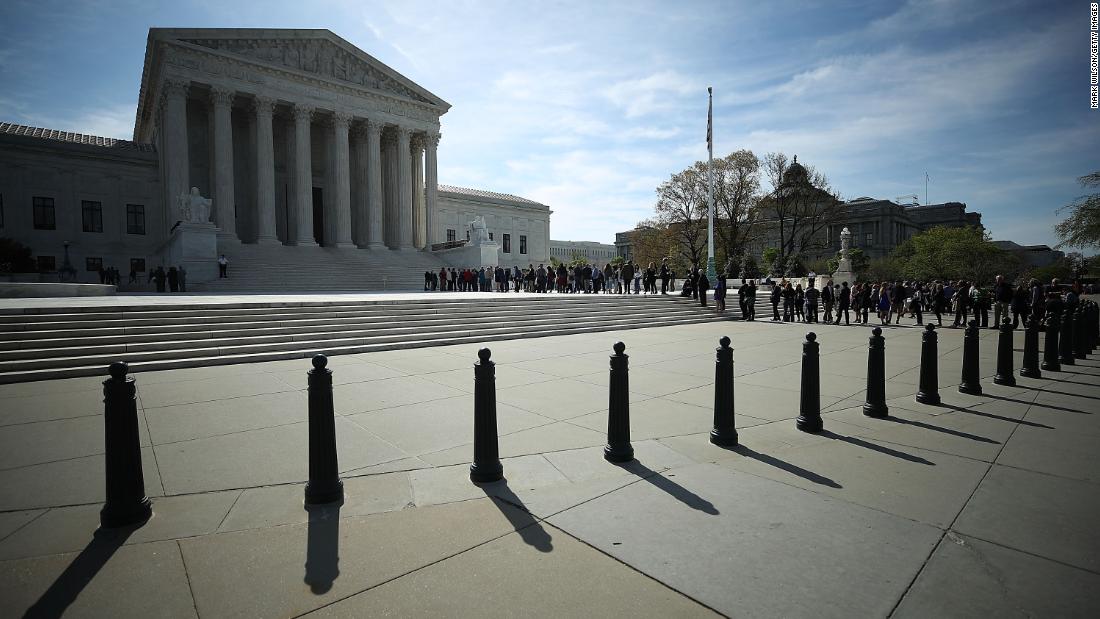A three-judge panel of a federal court on Wednesday threw out Maryland’s congressional map, reviving the legal fight over partisan gerrymandering just one day after the 2018 midterm elections.
The judges unanimously ordered Maryland to redraw two of its House districts before the 2020 election, saying Democratic leaders improperly broke up a Republican-leaning seat in Western Maryland when they crafted the map after the 2010 Census.
Maryland’s 6th District, which picked then-GOP Rep. Roscoe Bartlett under the old lines, has gone for the Democratic candidate in each election since, including electing David Trone — the self-funding Total Wine and More CEO who spent $18.2 million on this year’s campaign — on Tuesday.
Earlier this year, the Supreme Court
heard arguments about whether it should put a halt to this year’s elections because the map was unfair to Republicans in the district. The case introduced the possibility that the justices would establish firm guidelines about just how far political actors, like governors and state legislators, can go in drawing congressional lines that maximize their party’s advantage.
Instead, the high court
punted — ruling one week prior to the 2018 primaries that it was too late redraw Maryland's map this year and kicking the map back down to a lower court.
Wasting no time, the three-judge panel on Wednesday found that Maryland’s Democratic leaders, including then-Gov. Martin O’Malley, enacted a congressional map that violates the First Amendment rights of Republican voters in the 6th District. And even though the map has already been used for four elections, including on Tuesday, it cannot be used one final time in 2020, the judges wrote.
“Because the State’s enactment of the 2011 redistricting law violated the plaintiffs’ First Amendment rights, it is well recognized that the plaintiffs are, and will be, experiencing ongoing constitutional injury in the absence of a new redistricting map,” the judges wrote. “And only an injunction mandating a new, lawful map, not money damages, can remedy this injury.”
The three judges are James Bredar, who was appointed by then-President Barack Obama; Paul Niemeyer, appointed by Ronald Reagan; and George Levy Russell, also an Obama appointee.
The court is ordering Maryland to redraw two of the state’s eight districts — the 6th and the 8th, currently held by Democratic Rep. Jamie Raskin — prior to the state’s 2020 primaries. Any changes to the state’s map could disrupt the 7-to-1 advantage Democrats have enjoyed in Maryland's congressional delegation since the current map was enacted.
Maryland Gov. Larry Hogan, a Republican who was reelected Tuesday by a robust, double-digit margin in the Democratic state, celebrated the ruling in a statement on Wednesday.
“This is a victory for the vast majority of Marylanders who want free and fair elections and the numerous advocates from across the political spectrum who have been fighting partisan gerrymandering in our state for decades,” said Hogan. “With this unanimous ruling, the federal court is confirming what we in Maryland have known for a long time — that we have the most gerrymandered districts in the country, they were drawn this way for partisan reasons, and they violate Marylanders’ constitutional rights.”
But while Hogan praised the court’s decision, any appeal — which could go directly back to the Supreme Court — would come from Democratic state Attorney General Brian Frosh’s office. A spokesperson said Wednesday that Frosh’s office “is looking at options” but declined to comment further.






